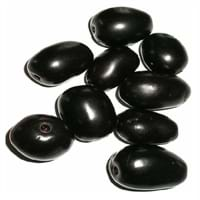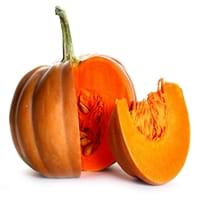Health Benefits
Cancer prevention, Heart care, Increase in haemoglobin, Regulates Blood Sugar, Ulcer prevention
Arthritis treatment, Cancer prevention, High Cholesterol Regulation, Lower blood pressure, Helps Prevent cataract, Prevents gall stones, Ulcer treatment, Weight loss properties
General Benefits
Boosts immune system, Digestive aid, Fights against infections, Strengthens bones
Boosts respiratory health, Eliminate parasites and infections, Protects against birth defects, Strengthens bones
Skin Benefits
Brightens and lightens complexion, Skin cleansing, Skin rejuvenation, Treatment of acne, Treatment of dark spots
Heals sunburn, Hydrates skin, Skin rejuvenation
Hair Benefits
Promotes longer and healthier hair, Protects hair
Regulates hair growth
Allergy Symptoms
Abdominal pains, NA
Abdominal cramps, Anaphylaxis, Digestive Problems, Dizziness, Eczema, Fainting, Hives, Inflammation, Itching, Tingling sensation in wrist and face, Vomiting, Wheezing
Side Effects
Decrease in blood sugar levels, Allergic reaction, Throat irritation, Throat swelling, Possibly unsafe during pregnancy
Kidney and gallbladder diseases
Best Time to Eat
As a snack in the late afternoon, Don't consume at night and before bed, Eat the fresh ones, avoid mixing with any other foods, don't eat after meal., Morning time (before lunch), Strictly avoid empty stomach
Along with meal, Don't eat after meal, Morning time (before lunch)
Vitamin B5 (Pantothenic Acid)
Not Available
Vitamin B9 (Folic acid)
Not Available
Vitamin C (Ascorbic Acid)
Vitamin E (Tocopherole)
Not Available
Vitamin K (Phyllochinone)
Not Available
Lutein+Zeaxanthin
Not Available
Calories in Fresh Fruit with Peel
Calories in Fresh Fruit without Peel
Not Available
Calories in Frozen Form
Not Available
Not Available
Calories in Dried Form
Not Available
Not Available
Calories in Canned Form
Not Available
Type
Tree fruit, Tropical
Berry
Season
Monsoon, Summer
All seasons
Varieties
Ram Jarnun and Paras
Jarrahdale, Peanut, Lakota, Cow, Sugar, Caribean, Red kuri, Buttercup and Pink lady
Color
Black, Magenta, Purple
Blue, Green, Orange, Red, White
Inside Color
Purple
Creamy Yellow
Taste
Astringent, Sweet
Creamy, Soft, Sweet
Origin
Bangladesh, India, Indonesia, Malaysia, Nepal, Pakistan, Philippines, Sri Lanka
Mexico
Soil Type
Loam, Sandy loam, Well-drained
Clay loam, Sandy loam, Well-drained
Climatic Conditions
Humid, Rainfall
Warm to hot climate
Facts about
- Wood of jambul tree is water-resistant wood & is used in railroads and to implement engines in the well.
- In Indian mythology, it is said that Jambul fruit was revered by Buddha.
- Jambul has a huge importance in Ayurveda.
- The name pumpkin has its roots in the Greek word ‘pepon’, meaning ‘large melon’.
- The largest pumpkin ever grown weighed 1,140 pounds.
- Pumpkins were once known for removing freckles & curing snake bites.
Other Countries
Bangladesh, Indonesia, Malaysia, Nepal, Pakistan, Philippines, Sri Lanka
Egypt, India, Indonesia, Iran, Italy, Mexico, Russia, Spain, United States of America
Top Importer
Not Available
United States of America
Botanical Name
Syzygium cumini
Cucurbita maxima
Synonym
Eugenia cumini
Cucurbita pepo, Squash
Subkingdom
Tracheobionta
Tracheobionta
Division
Magnoliophyta
Magnoliophyta
Class
Magnoliopsida
Magnoliopsida
Subclass
Rosidae
Dillenhidae
Order
Myrtales
Cucurbitales
Family
Myrtaceae
Cucurbitaceae
Species
S. cumini
Cucurbita mixta
Generic Group
Not Available
Not Available
Difference Between Jambul and Pumpkin
We might think that Jambul and Pumpkin are similar with respect to nutritional value and health benefits. But the nutrient content of both fruits is different. Jambul and Pumpkin Facts such as their taste, shape, color, and size are also distinct. The difference between Jambul and Pumpkin is explained here.
The amount of calories in 100 gm of fresh Jambul and Pumpkin with peel is 60.00 kcal and 26.00 kcal and the amount of calories without peel is Not Available and 30.00 kcal respectively. Thus, Jambul and Pumpkin belong to Low Calorie Fruits and High Calorie Fruits category.These fruits might or might not differ with respect to their scientific classification. The order of Jambul and Pumpkin is Myrtales and Cucurbitales respectively. Jambul belongs to Myrtaceae family and Pumpkin belongs to Cucurbitaceae family. Jambul belongs to Syzygium genus of S. cumini species and Pumpkin belongs to Cucurbita genus of Cucurbita mixta species. Beings plants, both fruits belong to Plantae Kingdom.









